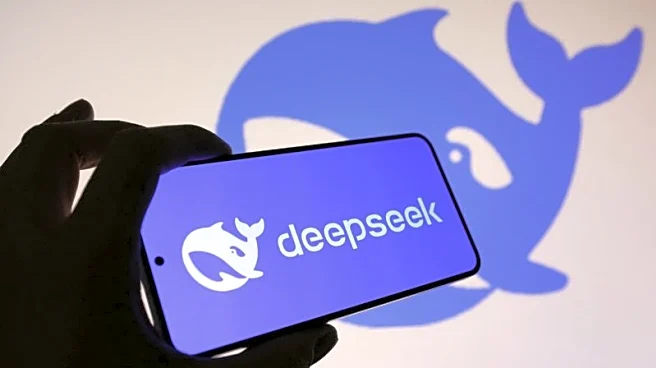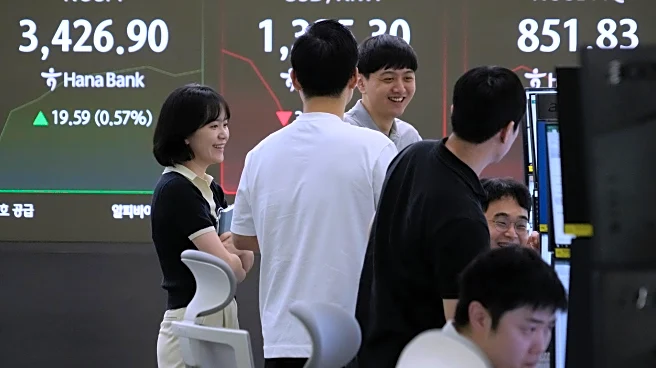What's Happening?
Chinese AI startup DeepSeek has developed its flagship R1 large language model at a training cost of just $294,000, significantly lower than the typical expenditure by U.S. tech giants. The model, trained on a cluster of Nvidia H800 graphics chips, boasts 670 billion parameters and excels in reasoning tasks. Released as an open-weight model, R1 quickly became popular on platforms like Hugging Face. Despite its low cost, R1 rivals leading models from OpenAI, Google, and Meta in performance, prompting a market reaction that saw U.S. tech stocks plunge and Nvidia's valuation drop significantly.
Why It's Important?
DeepSeek's achievement challenges the notion that only large budgets can produce top-tier AI models, potentially reshaping the competitive landscape in AI development. The model's success highlights the potential for cost-efficient innovation to disrupt established players, prompting U.S. companies to reconsider their strategies. This development could lead to increased investment in AI research and infrastructure, as stakeholders seek to maintain competitiveness. The open-source nature of R1 also democratizes access to advanced AI capabilities, fostering global collaboration and innovation.
What's Next?
The emergence of DeepSeek R1 is likely to intensify the global AI race, with U.S. and Chinese stakeholders recalibrating their strategies. U.S. companies may accelerate their development efforts or adjust pricing to remain competitive. Meanwhile, China might leverage R1's success to bolster its AI industry and influence abroad. Regulatory bodies may also refine their stance on open-source models, ensuring responsible deployment. As the competition heats up, both nations will likely focus on innovation and efficiency to gain an edge.
Beyond the Headlines
DeepSeek's model raises questions about the efficacy of U.S. tech sanctions, as the company circumvented constraints through innovation. The success of R1 could spur a push for self-reliance in AI infrastructure within China, aligning with strategic goals. Additionally, the model's open-source nature challenges traditional notions of intellectual property and competition, potentially influencing future regulatory and ethical considerations in AI development.












